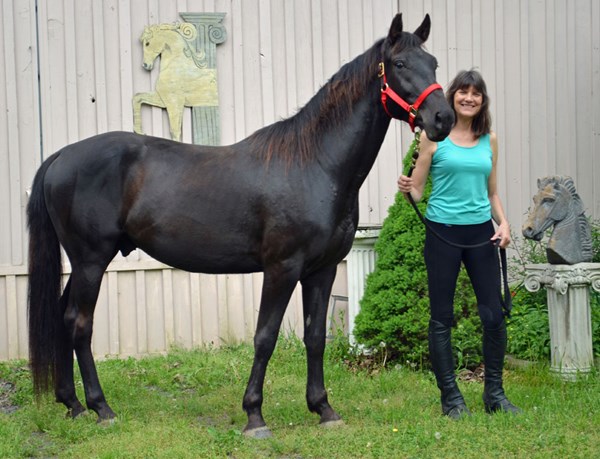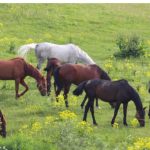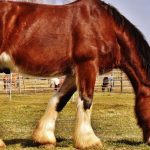Italian horse breeds include the Maremmano, Siciliano Indigeno, and Sardinian Anglo-Arab. These breeds are known for their versatility and endurance.
Italy boasts a rich equestrian heritage, reflected in its diverse horse breeds. The Maremmano, originating from the Maremma region, excels in agricultural and military roles. The Siciliano Indigeno, hailing from Sicily, is known for its strength and agility, making it ideal for riding and driving.
The Sardinian Anglo-Arab, a crossbreed, combines the best traits of Arabian and Thoroughbred horses, excelling in endurance and speed. Each breed showcases unique characteristics shaped by Italy’s varied landscapes and cultural history. These horses not only serve practical purposes but also contribute to Italy’s equestrian tourism and sporting events.

Credit: en.wikipedia.org
Introduction To Italian Horse Breeds
Italian horse breeds have a rich history. These horses have been part of Italy for centuries. They played a big role in wars and farming. Many ancient battles were won because of these strong horses. Their strength and stamina were unmatched. Over time, they became symbols of power and pride. Kings and noblemen often rode these majestic horses. Their presence in art and literature is noteworthy. They are a testament to Italy’s glorious past.
Italian horses are cherished in Italian culture. They feature in many festivals and parades. People celebrate their beauty and grace. Horse racing is a popular sport in Italy. Events like the Palio di Siena attract many visitors. These horses also appear in traditional Italian stories. They symbolize freedom and strength. Children learn about them in schools. Italian horse breeds continue to inspire artists and writers. They hold a special place in Italian hearts.
Maremmano
The Maremmano horse comes from Italy. It was first bred in the region of Maremma. This breed is known for its strength and endurance. People used them for farming and herding cattle. The Maremmano has a long history that dates back to ancient times. Over the years, they have been crossbred with other horses. This helped improve their qualities and abilities. Today, they are still valued for their hard work and resilience.
Maremmano horses are medium to large in size. They have a strong build and solid legs. Their coat is usually bay or brown. These horses are known for their calm temperament. They are very intelligent and easy to train. Maremmanos are also very brave and loyal. They can handle tough tasks and are very reliable. This makes them great for different types of work.
Sardinian Anglo-arab
The Sardinian Anglo-Arab breed started in the 19th century. Breeders crossed local Sardinian mares with Arabian and Thoroughbred stallions. The goal was to create a strong and versatile horse. The breed gained popularity quickly. It was known for its endurance and agility.
Sardinian Anglo-Arabs have a well-muscled body. They stand between 15 to 16 hands tall. These horses have a refined head with a straight profile. Their legs are strong and sturdy. The coat is usually bay, chestnut, or gray. Sardinian Anglo-Arabs are known for their expressive eyes and alert ears.
Italian Heavy Draft
The Italian Heavy Draft horse is strong and powerful. Farmers use these horses for plowing and harvesting. They can pull heavy loads with ease. These horses are also used in forestry work. Their strength makes them perfect for pulling logs. In the past, these horses were essential for transporting goods. Their calm nature makes them reliable for hard tasks. They are still valued for their versatility today.
Regular feeding and clean water are vital for these horses. Their diet should include hay, grains, and supplements. Daily grooming keeps their coat shiny and healthy. Hoof care is important to avoid infections. They need spacious stables to rest. Regular exercise keeps them fit and strong. Veterinary check-ups ensure they stay healthy. Proper care helps these horses live a long and happy life.
Siciliano Indigeno
The Siciliano Indigeno is a native Italian horse. It has a rich history dating back to ancient times. This breed was used by Roman soldiers for its strength. Over centuries, it adapted to the Italian landscape. It became a versatile workhorse.
Today, the Siciliano Indigeno is popular in horse riding. It is also used in agriculture. Many people love its calm nature. This breed is great for beginners and children. It is also used in local festivals and parades.

Credit: www.pinterest.com
Salernitano
Salernitano horses, an ancient Italian breed, are renowned for their elegance and agility. These horses excel in dressage and show jumping, making them favorites among equestrians.
Evolving Role
The Salernitano horse has changed over time. Once used in war, it is now a popular sport horse. These horses excel in show jumping and dressage. Their calm nature makes them great for riding schools. Farmers also use them for light work. They are versatile and adaptable.
Distinctive Features
The Salernitano horse has strong legs and a muscular body. Its coat is usually bay or chestnut. These horses have big eyes and a broad forehead. Their manes and tails are often thick and flowing. They stand about 16 hands tall. This breed is known for its elegance and grace.
Lipizzaner In Italy
The Lipizzaner breed has a rich history in Italy. Originating from the Habsburg Monarchy, these horses were bred for their strength and agility. The breed was named after the Lipica stud farm, established in 1580. Over the years, Lipizzaners became famous for their elegant appearance and graceful movements. They played a crucial role in the Spanish Riding School in Vienna. Today, they are known as a symbol of classical dressage.
Lipizzaners excel in classical dressage. Their strength and balance make them perfect for complex maneuvers. Training begins at a young age and focuses on discipline and precision. These horses are trained to perform airs above the ground. This includes leaps and jumps that showcase their athleticism. The training process is long but results in spectacular performances.
Conservation Efforts
Conservation efforts for Italian horse breeds focus on preserving genetic diversity and protecting these unique equine heritage. Dedicated programs ensure the survival of rare breeds like the Maremmano and Sicilian Oriental Purebred.
Challenges Faced
Many Italian horse breeds face threats due to loss of habitat and declining populations. Farmers often prefer modern breeds over traditional ones. This leads to fewer breeding programs for native breeds. Economic constraints also hinder conservation efforts. Another challenge is the lack of public awareness. Many people are not aware of the value of these heritage breeds.
Preservation Initiatives
Several initiatives aim to protect Italian horse breeds. Government grants support breeding programs. Non-profit organizations also play a key role. They organize awareness campaigns and educational programs. Some initiatives focus on habitat restoration. This provides a safe environment for the horses. Genetic research is also crucial. It helps understand and preserve the unique traits of each breed.

Credit: dressagetoday.com
Frequently Asked Questions
What Horses Are Native To Italy?
Italian native horses include the Maremmano, Sicilian, and Bardigiano. These breeds are known for their strength and endurance.
What Breed Is The Hardy Italian Horse?
The Hardy Italian horse breed is the Maremmano. This breed is known for its endurance and versatility. Originating from the Maremma region, it is well-suited for various equestrian activities.
Is Italy Known For Horses?
Italy is not primarily known for horses. It is famous for its rich history, culture, and cuisine.
What Is The Big Horse In Italy?
The big horse in Italy is the “Cavallo di Leonardo” in Milan. It’s a massive bronze statue inspired by Leonardo da Vinci’s designs.
Conclusion
Exploring Italian horse breeds reveals rich history and diverse characteristics. Each breed offers unique traits and beauty. Whether for sport or leisure, these horses captivate enthusiasts worldwide. Embrace the charm and elegance of Italian horses in your equine adventures. Their legacy and versatility continue to inspire horse lovers everywhere.






